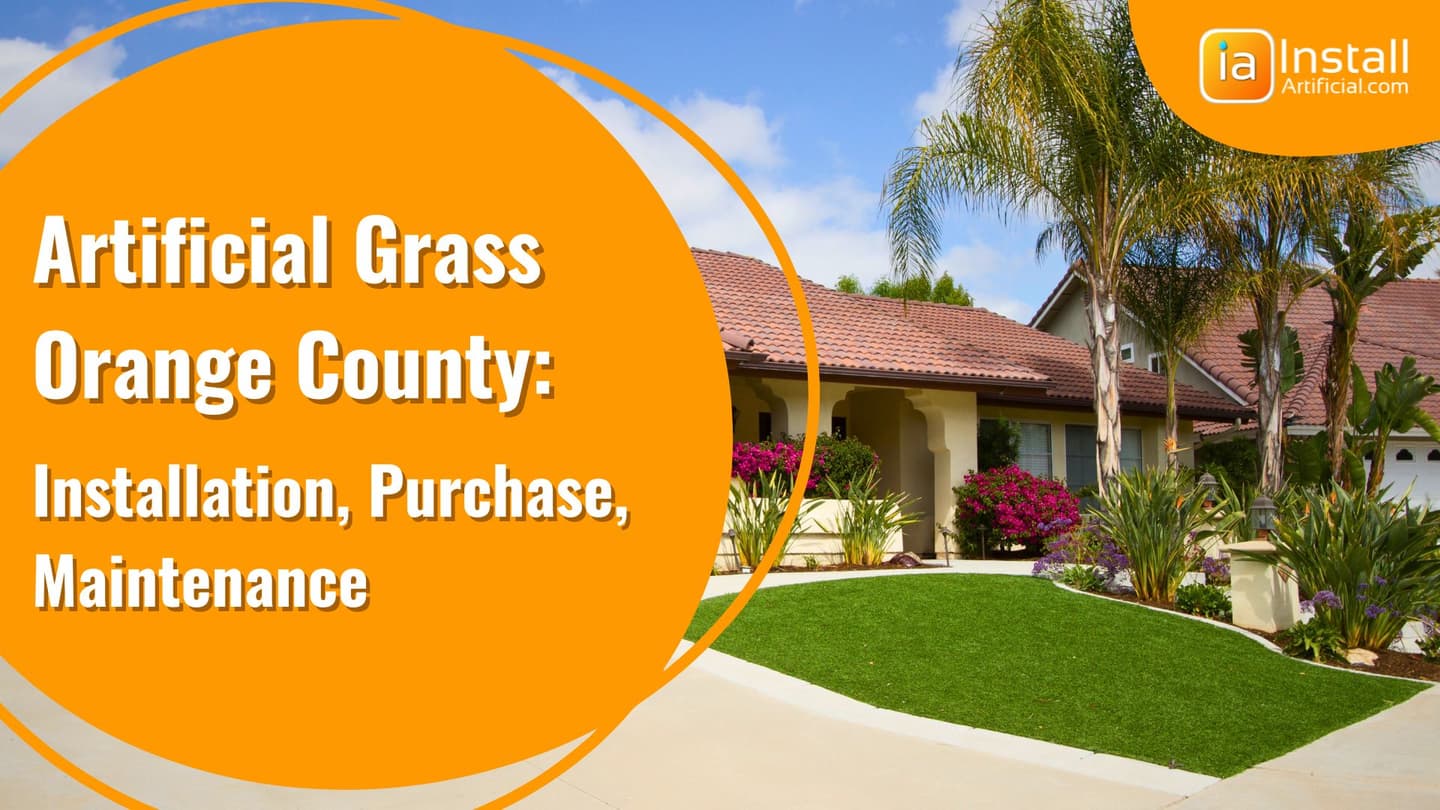What is artificial turf infill and why is it necessary in most artificial grass installations? Learn the different types of infill and compare your options to decide what will work best for your synthetic lawn.
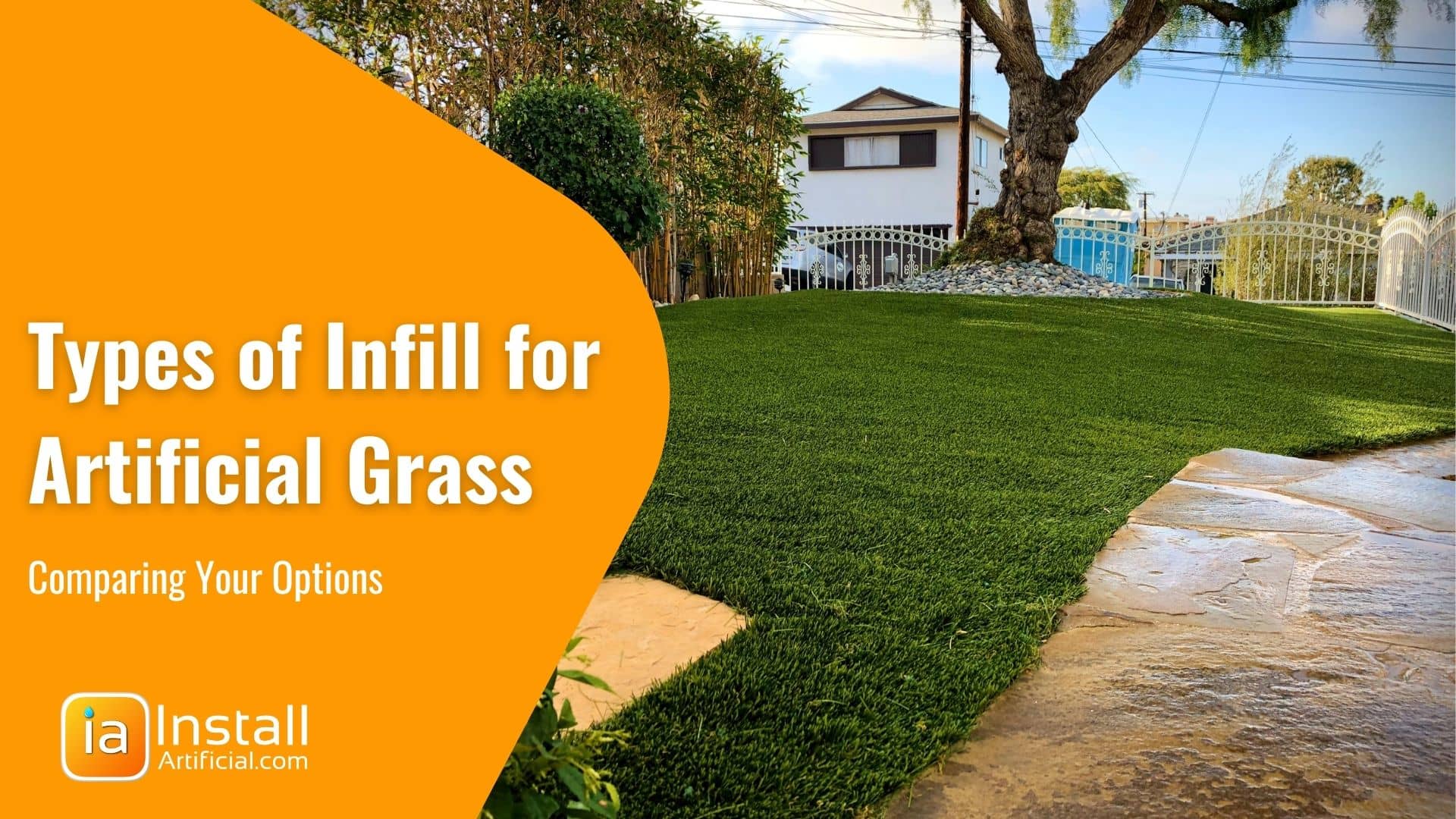
What is Artificial Turf Infill?
Artificial grass infill is any product that is placed between the fibers of artificial grass. There are many different types of infill available, but most traditional infills consist of sand, rubber, and TPE. A variety of substances can be used for artificial grass infill, from cork to walnut shells or even ground-up shoe soles. No type of infill is exactly like the next and each material has its own benefits and drawbacks depending on your turf’s application.
Regardless if you're installing regular artificial grass, turf for pets, or even a backyard putting green, all installations will require infill. So how much infill do you need? It is recommended to use between .5-1 lb. of infill materials per square foot.

Why is Infill Necessary for Artificial Grass?
Infill Provides Stability
For starters, when making the switch from natural grass to a fake lawn, infill helps keep the turf fibers upright, giving the turf a full and lush appearance. Without infill to provide support, the turf will gradually become brittle, and the blades will become more likely to break and fray.
Infill Protects the Turf Backing
One of the many things that infill does is protects the backing of the turf. The backing is what holds the fake grass together and helps retain its shape. By having a barrier between foot traffic and the backing, a turf’s life expectancy can be greatly increased.
Infill Prevents Wrinkles and Turf Movement
Artificial turf can potentially move and shift based on a variety of factors, such as weather fluctuation. This can cause it to bulge and wrinkle, which won’t look natural and can be a potential tripping hazard. The infill acts as a ballast to keep the turf weighted in place and prevent lifting or wrinkling.
Turf Infill Can Prevent Pet Odors
If you opt for
Zeofill or a coated antibacterial infill, this will provide added protection against bacteria growth and
odor in areas where dogs are at play and using the restroom. These types of infill are highly recommended for
pet owners and will lengthen the life of your lawn immensely.
Types of Infill for Artificial Turf
There are several different options when it comes to infill for
artificial grass. While most share the same intended benefits, some do a better job than others. We'd recommend using the most premium infill you can afford. This will lengthen the life of your installation and the better infill you use, the less often it will need to be reapplied which can save you money in the long run.
Silica Sand Infill
Made of eroded quartz, silica sand infill is the most commonly used grass infill during turf installation. Silica sand is an inexpensive type of infill that gives your artificial grass blades support to stand up. It also improves drainage and helps keep the blades of synthetic turf standing in an upright position.
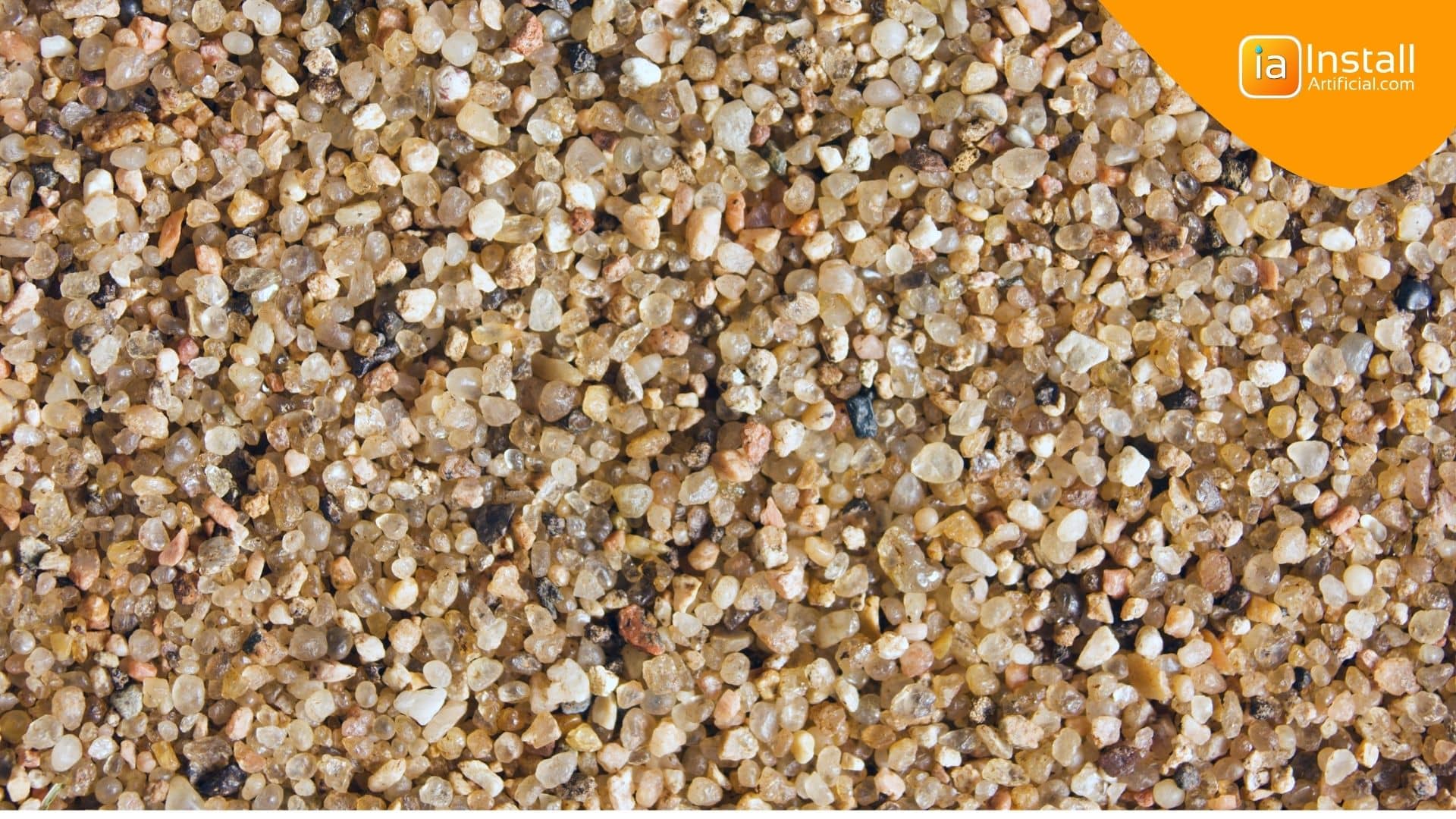
However, this type of infill also has a few downsides. Because the particles are more abrasive and angular, there is a high chance the sand can harden and clump together over time decreasing permeability. Silica sand can also trap pet odors so if you have pets you may want to avoid silica sand infill.
Silica sand infill is most ideal in areas that feature lower foot traffic such as decorative commercial lawns, hillsides, or balconies.
Antibacterial Coated Sand Infill
Antibacterial coated sand is a popular type of infill for homeowners with pets or children. It stays cool under sunlight, unlike silica sand. It’s also the only type of infill that has anti-microbial properties, which kill bacteria. Because the granules are coated, the sand is rounded and provides more impact absorbency. And because it doesn’t absorb liquids, it’s the most ideal option for pet turf installations.
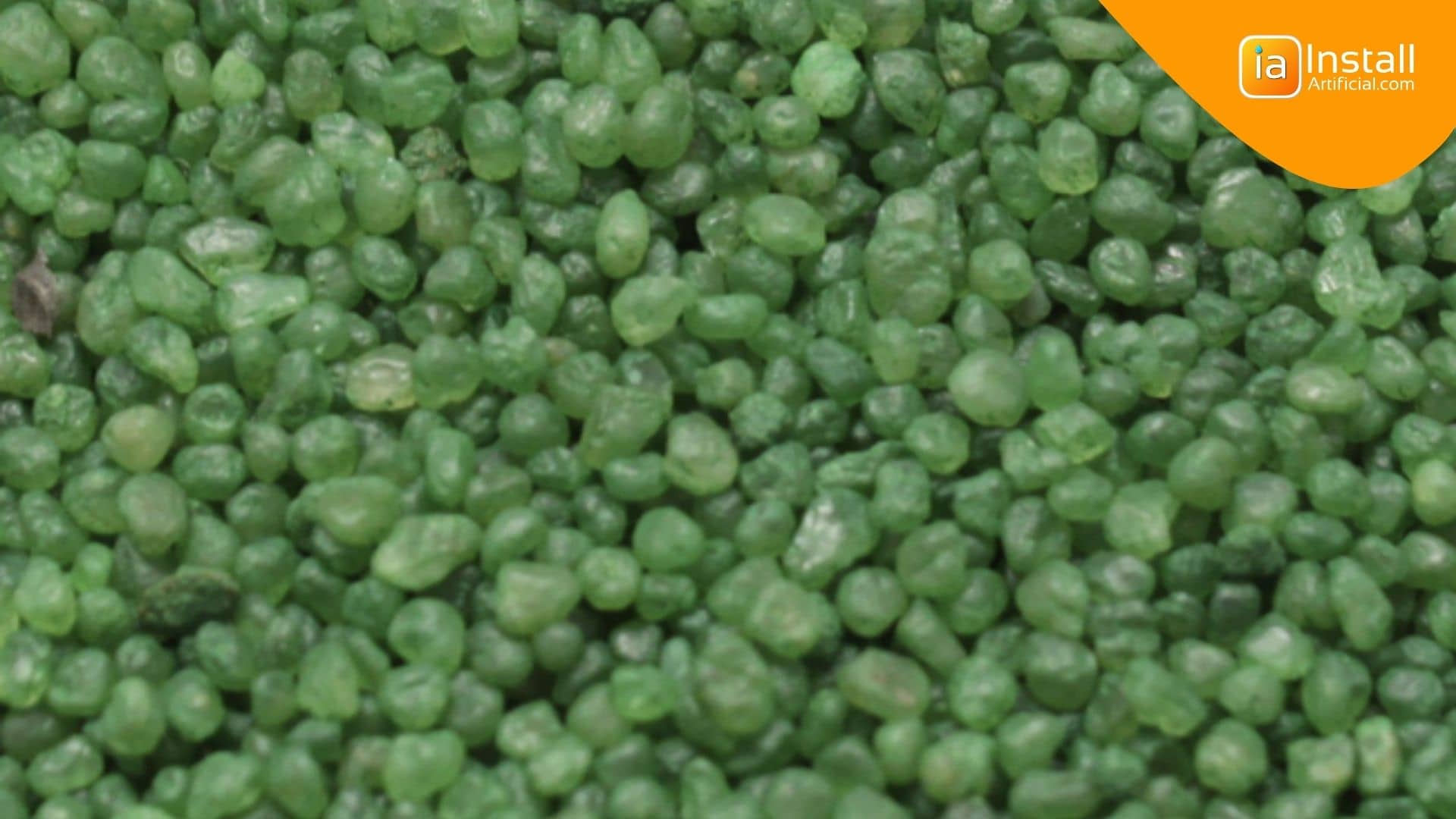
The downside is that antibacterial sand is more expensive than both silica sand and rubber infills, and tends to cover less ground.
Crumb Rubber Infill
Another popular material is rubber, made of ground-up tires. Rubber infill gives your artificial turf a softness and bounce that mimics natural grass. Because of this, you'll often see crumb rubber infill featured in sports turf applications. Rubber infill also adds volume to artificial turf, making it more full and lush looking, and it keeps the blades of artificial grass standing upright. As an added bonus, applying rubber infill is super quick and easy.
Rubber artificial turf infill has multiple disadvantages. Crumb rubber infill can leave black dust on clothing, furniture, and shoes. It also traps and absorbs heat quickly resulting in the surface becoming hot under direct sunlight. Rubber infill also provides no bacteria-killing functionality and has been known to trap odors.
Cork Infill
Cork infill is a natural infill product made up of ground-up cork. It's becoming more common in sports applications, offering similar gameplay as rubber infill without the disadvantages. Cork provides energy absorption and is quick to regain its shape upon impact.
Cork infill can be harder to find and often requires a large purchase. Because this type of turf infill isn't as common as the others offered, it's trickier to get ahold of cork infill in small amounts for residential or small projects. You'll typically find this type of infill on large commercial fields.
Zeofill (Turf Deodorizer)
This is a popular infill choice for people with pets. Zeofill is an all-natural organic product that absorbs urine and traps ammonia gases that cause a foul odor. Zeofill then will suppress the odors until they're washed away during cleaning or heavy rainfall. Zeofill is also known for being able to retain more water than other turf infill options, which can help keep the surface of your artificial lawn cooler.
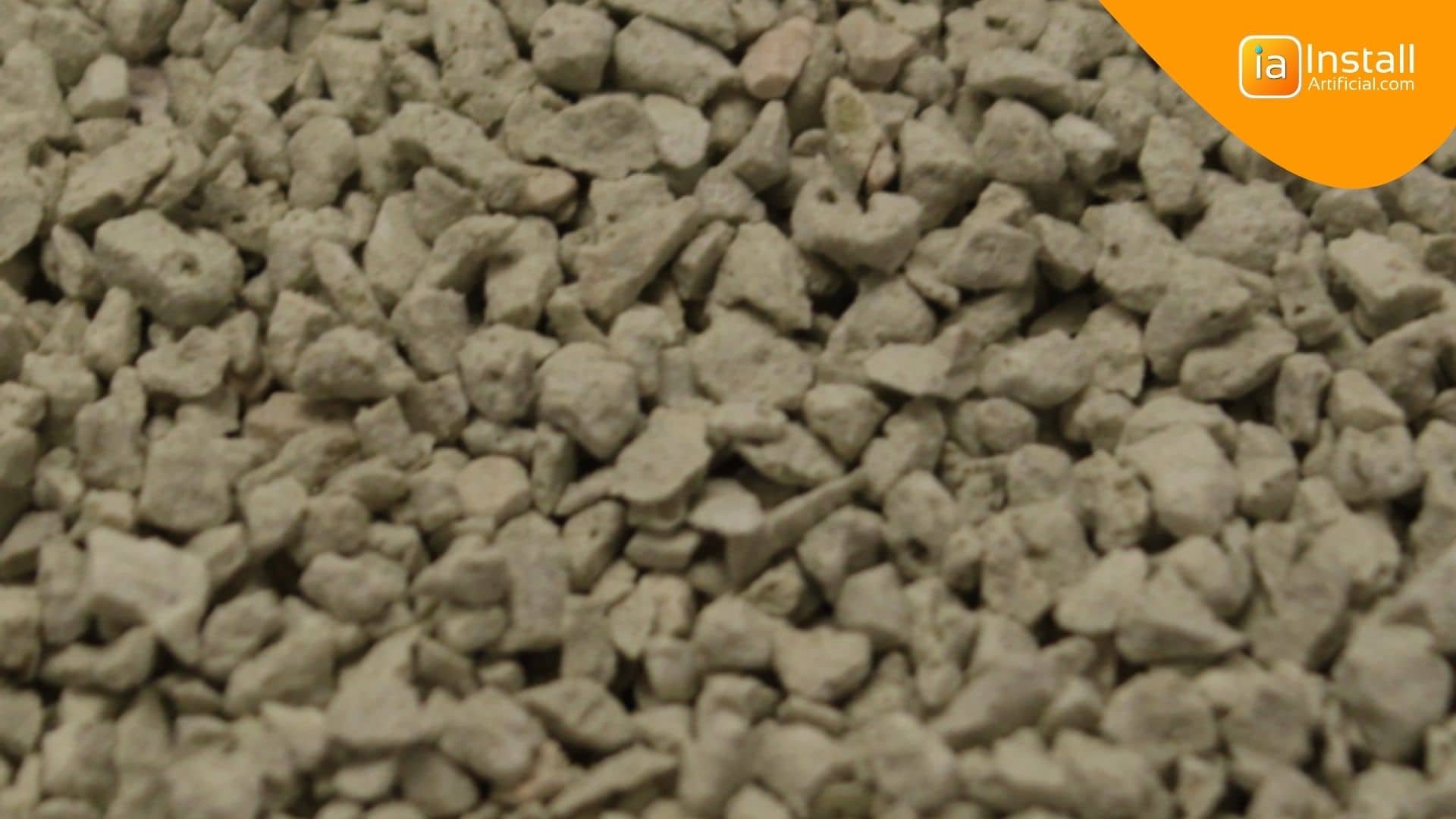
A downfall to Zeofill infill is that because it's such a fine substance, it can create a film on the surface of your artificial grass. For this reason, we often recommend spreading a layer of Zeofill underneath the artificial grass to help with odor and then opting for a different infill on top.
Walnut Shell Infill
Granulated walnut shells are 100% organic matter and have been becoming a more popular alternative for artificial grass infill. Walnut shell turf infill puts emphasis on its cooling abilities. By absorbing water but not overexpanding, walnut shells can keep the surface of your lawn cooler than other infill options, specifically crumb rubber and silica sand.
This alternative will be on the more expensive end but only requires about half the application of regular silica sand infill.
HydroChill Infill
As technologies continue to advance, leading names in the artificial turf industry are able to come up with better alternatives. HydroChill infill has been developed with the sole purpose of keeping synthetic lawns cooler. HydroChill is a pre-coated sand infill that’s activated by adding water. When synthetic turf is heated by the sun, water stored in HydroChill is released through evaporative cooling. Designed to provide maximum benefit when the sun is directly overhead, lawns with HydroChill infill have achieved up to 50 degrees lower surface temperatures in comparison to silica sand infill.
HydroChill is considered a premium artificial grass infill and will cost more than the more cost-effective alternatives.
Now that you better understand the different artificial grass infill options, you can make an educated decision for your lawn, putting green, balcony, or playground. Turf infill is often an overlooked component of synthetic grass, but can greatly affect the lifespan, surface temperature, and overall stability of the installation. Ready to get your project started? Request a custom estimate in 2 minutes or less below!
Commonly Asked Questions About Artificial Grass Infill
What infill is used for pet turf installations?
- We recommend applying a layer of Zeofill turf deodorizer under the turf and antimicrobial sand infill on top. This system allows for simpler cleaning and helps to control the odor.
What infill will achieve the lowest temperature on the artificial turf surface organically?
- Safeshell infill is light and will absorb the least amount of heat. It also absorbs morning moisture, reducing the temperature of artificial grass while the moisture evaporates.
What infill is not recommended for residential turf installation projects?
- We never use rubber infill in residential projects, and we don't recommend doing so. To provide additional cushioning, we instead recommend soft pads. This allows the same shock absorbency and children will not be exposed to rubber particles daily.
Why does Hydrochill infill not provide the desired temperature difference?
- Hydrochill test results are comparing a wet infill to dry alternatives, this does not create a fair comparison. In fact, water added to dry infill would result in a similar cooling effect. The comparison is not sufficient to conclude the difference as stated by many Hydrochill resellers.
Does Hydrochill help reduce the temperature of dry artificial lawns?
- Our tests concluded that the temperature of Hydrochill is almost equal to the temperature of silica sand in dry conditions. The answer is no. Hydrochill is effective only when moisture is added.
Would you recommend applying Hydrochill for venues?
- Hydrochill can be slippery when wet. Safety first, and comfort second. Therefore, the answer is no. We do not recommend Hydrochill infill for venues.
What type of infill would you recommend for venues?
- We recommend antimicrobial, silica, and a layer of nutshell infill for venues. Antimicrobial and silica sand will weigh down the turf. Because commercial installations are nail-free, heavy infill is a must-have to hold turf down and prevent movements. Nutshell infill will shade the sand and provide a softer layer of light material that does not absorb much heat.
What are the disadvantages of organic infills such as mulch or nutshell?
- Organic infills are more difficult to clean. They also can interact with mold and support bacteria growth. When opting for an organic infill, please consider our artificial turf cleaning recommendations.
What temperature does artificial turf reach when it's hot?
- The temperature of turf is affected by the wind conditions.
- With wind and air flow, the temperature of the turf can reach temps of 110-140F. Without wind, it could easily get to 160F and begin to cause discomfort.
The bottom line is this, artificial grass will get hot. On a warm day under direct sun, discomfort can occur within 15 minutes of being on turf. To remain comfortable on hot days, the area should be shaded or used during periods when the sun is less active. In the shade with a bit of wind, the temperature of artificial grass will be comparable to the air temp.
